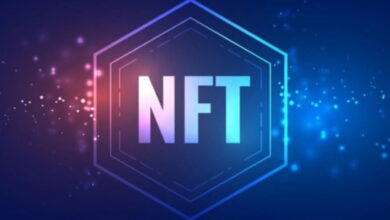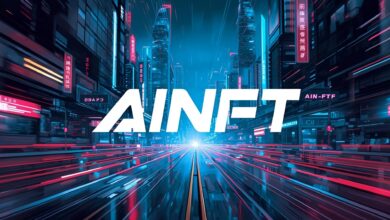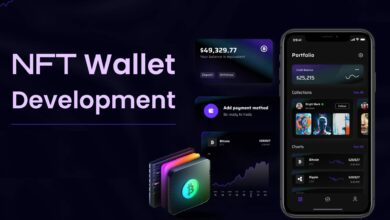NFT Trading Strategies for Beginners Complete Guide to Profitable Trading

The world of Non-Fungible Tokens (NFTs) has revolutionized digital ownership, creating unprecedented opportunities for traders and investors. If you’re looking to master NFT trading strategies for beginners, you’ve arrived at the right place. This comprehensive guide will equip you with the essential knowledge and proven techniques needed to navigate the dynamic NFT marketplace successfully.
Whether you’re completely new to blockchain technology or have some cryptocurrency experience, understanding effective NFT trading strategies for beginners is crucial for making informed decisions and maximizing your potential returns in this exciting digital asset space.
Understanding the NFT Market Landscape
The NFT ecosystem operates differently from traditional financial markets, requiring specialized knowledge and strategic approaches. Unlike stocks or bonds, NFTs represent unique digital assets that derive value from scarcity, utility, community engagement, and artistic merit. Successful traders understand that each NFT project has distinct characteristics that influence its market performance.
Market dynamics in the NFT space are driven by several factors, including social media trends, celebrity endorsements, technological developments, and overall cryptocurrency market sentiment. The volatile nature of this market presents both opportunities and risks that beginners must carefully consider.
Popular NFT categories include digital art, gaming assets, virtual real estate, domain names, and utility tokens. Each category follows different valuation principles and trading patterns, making it essential for new traders to specialize in specific niches where they can develop expertise.
Essential NFT Trading Strategies for Beginners
Research-Based Trading Approach
Fundamental analysis forms the foundation of successful NFT trading. Before investing in any project, examine the team’s background, roadmap execution, community engagement metrics, and long-term utility. Projects with strong fundamentals typically maintain value better during market downturns.
Technical analysis, while less developed in NFT markets compared to traditional assets, can provide valuable insights. Monitor floor prices, trading volumes, holder distribution, and price trends to identify potential opportunities. Tools like OpenSea analytics and NFT statistics platforms offer crucial market data.
Community sentiment analysis is particularly important in NFT trading. Active Discord servers, Twitter engagement, and social media buzz often correlate with price movements. However, distinguish between genuine community growth and artificial hype generated by promotional campaigns.
Timing and Market Cycles
Understanding market cycles helps optimize entry and exit points. NFT markets often experience seasonal patterns, with increased activity during cryptocurrency bull runs and reduced trading during bear markets. Monitor broader cryptocurrency trends as they significantly impact NFT valuations.
The “mint and flip” strategy involves purchasing NFTs during initial releases and selling them quickly for profit. This approach requires excellent timing, thorough project research, and the ability to act swiftly during high-demand launches.
Long-term holding strategies focus on acquiring NFTs from established projects with strong communities and ongoing development. This approach requires patience but can yield substantial returns for projects that gain mainstream adoption or develop significant utility.
Platform Selection and Technical Setup

Choosing the Right Marketplace
OpenSea remains the largest NFT marketplace, offering extensive project variety and high liquidity. However, specialized platforms like SuperRare for digital art or Axie Marketplace for gaming assets may provide better opportunities in specific niches.
Consider transaction fees, user interface quality, security features, and supported blockchain networks when selecting trading platforms. Some platforms offer advanced features like bulk purchasing, analytics tools, and portfolio tracking that can enhance your trading efficiency.
Gas fees on Ethereum-based NFTs can significantly impact profitability, especially for smaller transactions. Alternative blockchains like Polygon, Solana, or Binance Smart Chain offer lower fees but may have reduced liquidity and project variety.
Wallet Security and Management
Secure wallet management is crucial for NFT trading success. Use hardware wallets for storing valuable assets and maintain separate wallets for trading activities. Never share private keys or seed phrases, and be cautious of phishing attempts targeting NFT traders.
Consider using multiple wallets to organize your holdings by project type, investment timeframe, or risk level. This approach helps maintain better portfolio management and reduces the risk of total loss from security breaches. Regular backup procedures and secure storage of wallet information protect against hardware failures or loss. Keep backup information in multiple secure locations and test recovery procedures periodically.
Risk Management and Portfolio Diversification
Setting Investment Limits
Establish clear investment limits before entering any trades. Never invest more than you can afford to lose, as NFT markets are highly speculative and volatile. Many successful traders allocate only 5-10% of their total investment portfolio to NFTs. Implement stop-loss strategies by setting predetermined exit points for losing positions.
While NFT markets don’t offer traditional stop-loss orders, having mental stops helps prevent emotional decision-making during market downturns. Position sizing ensures that no single investment can catastrophically impact your portfolio. Distribute investments across multiple projects and categories to reduce concentration risk.
Diversification Strategies
Project diversification involves investing in NFTs from different collections, creators, and blockchain networks. This approach reduces the impact of any single project’s failure on your overall portfolio performance. Temporal diversification means spreading purchases over time rather than making large investments at once.
This dollar-cost averaging approach helps mitigate the impact of market timing and reduces exposure to short-term volatility. Category diversification involves investing across different NFT types such as art, gaming, utility tokens, and virtual real estate. Each category responds differently to market conditions, providing portfolio stability.
Advanced Trading Techniques
Arbitrage Opportunities
Cross-platform arbitrage involves purchasing NFTs on one marketplace and selling them on another for profit. Price discrepancies between platforms create these opportunities, though they require quick execution and consideration of transaction fees. Temporal arbitrage capitalizes on price differences across time zones or during specific events.
Some NFT collections experience predictable price patterns around announcements, partnerships, or major market events. Information arbitrage leverages superior knowledge or earlier access to market-moving information. Following project social media, joining Discord communities, and monitoring developer announcements can provide trading advantages.
Scalping and Short-Term Trading
NFT scalping involves making quick profits from small price movements within short timeframes. This strategy requires constant market monitoring, quick decision-making, and a thorough understanding of specific project dynamics. Event-driven trading capitalizes on predictable price movements around project milestones, celebrity endorsements, or major announcements.
Successful event traders develop systems for identifying and acting on these opportunities quickly. Momentum trading follows established price trends, buying during upward movements and selling before reversals. This approach requires strong technical analysis skills and disciplined risk management.
Common Mistakes and How to Avoid Them
Emotional Trading Pitfalls
FOMO (Fear of Missing Out) leads many beginners to make impulsive purchases at peak prices. Develop systematic approaches to opportunity evaluation and stick to predetermined investment criteria regardless of market excitement.
Panic selling during market downturns often results in significant losses. Establish clear exit strategies before entering positions and avoid making decisions based on short-term price movements or social media sentiment. Overconfidence from early successes can lead to increased risk-taking and larger position sizes. Maintain consistent risk management practices regardless of recent performance.
Technical and Operational Errors
Insufficient due diligence before purchases results in investments in low-quality or fraudulent projects. Develop standardized research processes and never skip fundamental analysis steps. Gas fee miscalculations can eliminate profits from otherwise successful trades.
Always factor transaction costs into profit calculations and consider alternative blockchains for smaller transactions. Security oversights, including weak passwords, unsecured wallets, or falling for phishing scams, can result in total asset loss. Prioritize security practices and stay updated on common scam techniques.
Building Long-Term Success
Community Engagement and Networking
Active participation in NFT communities provides valuable market insights and early access to promising projects. Join Discord servers, follow Twitter accounts, and participate in community discussions to build relationships and gather information.
Networking with other traders, collectors, and project creators can lead to exclusive opportunities and collaborative ventures. Attend virtual events, join trading groups, and contribute valuable insights to establish your reputation. Learning from experienced traders through mentorship or educational content accelerates skill development. Follow successful traders, read their analyses, and adapt their strategies to your trading style.
Continuous Education and Adaptation
The NFT space evolves rapidly with new technologies, platforms, and trading strategies emerging regularly. Commit to ongoing education through courses, podcasts, newsletters, and industry publications. Market conditions change frequently, requiring adaptation of trading strategies and risk management approaches.
Regularly review and update your trading plan based on market developments and personal performance. Technology improvements and new blockchain networks create new opportunities and challenges. Stay informed about developments in layer-2 solutions, cross-chain bridges, and emerging NFT standards.
Tools and Resources for NFT Traders

Analytics and Research Platforms
NFT analytics platforms like Nansen, DappRadar, and CryptoSlam provide comprehensive market data, project rankings, and trend analysis. These tools help identify opportunities and track portfolio performance. Social media monitoring tools track mentions, sentiment, and engagement metrics for specific projects.
Understanding social media trends often provides early indicators of price movements. Portfolio tracking applications help monitor holdings, calculate profits and losses, and analyze trading performance. Regular performance analysis helps identify successful strategies and areas for improvement.
Trading Automation and Efficiency Tools
Browser extensions and wallet integrations streamline the trading process by providing quick access to market data and transaction capabilities. These tools reduce the time required for research and execution. Alert systems notify traders of price movements, new listings, or market opportunities in real-time.
Setting up comprehensive alert systems helps capture time-sensitive opportunities. Bulk trading tools enable efficient management of large portfolios or multiple simultaneous transactions. These tools are particularly valuable for active traders dealing with multiple projects.
Market Trends and Future Opportunities
Emerging Sectors and Technologies
Gaming NFTs represent a rapidly growing sector with potential for mainstream adoption. Understanding gaming mechanics, player economics, and community dynamics provides advantages in this space. Utility NFTs that provide real-world benefits or exclusive access are gaining traction.
Projects combining entertainment, education, or practical applications may offer sustainable long-term value. Virtual real estate and metaverse assets are developing into significant investment categories. Early positions in established virtual worlds may provide substantial returns as these ecosystems mature.
Regulatory Considerations
Evolving regulations in various jurisdictions may impact NFT trading strategies and tax obligations. Stay informed about regulatory developments in your location and consider consulting with tax professionals. Compliance requirements for NFT platforms and traders may become more stringent over time.
Understanding current regulations and preparing for future changes helps ensure sustainable trading practices. International trading considerations become important as NFT markets become more global. Different jurisdictions may have varying rules regarding digital asset trading and taxation.
Also Read: NFT Market Trends and Future Outlook for 2025
Conclusion
Mastering NFT trading strategies for beginners requires dedication, continuous learning, and disciplined risk management. The strategies outlined in this guide provide a solid foundation for entering the NFT market successfully. Remember that profitable trading comes from the consistent application of proven techniques rather than seeking quick profits from trending projects.
Start by implementing basic research and security practices before advancing to more complex trading strategies. Focus on understanding one or two project categories thoroughly rather than spreading your attention across the entire NFT landscape. Build your knowledge gradually through community participation and careful observation of market patterns.
The NFT market continues evolving rapidly, presenting both opportunities and challenges for new traders. Success requires adapting your NFT trading strategies for beginners based on market conditions, technological developments, and personal experience. Begin your NFT trading journey today by selecting a secure wallet, choosing a reputable marketplace, and making your first small investment in a thoroughly researched project.




